

Ikat
A method of weaving that creates artistic images on textiles
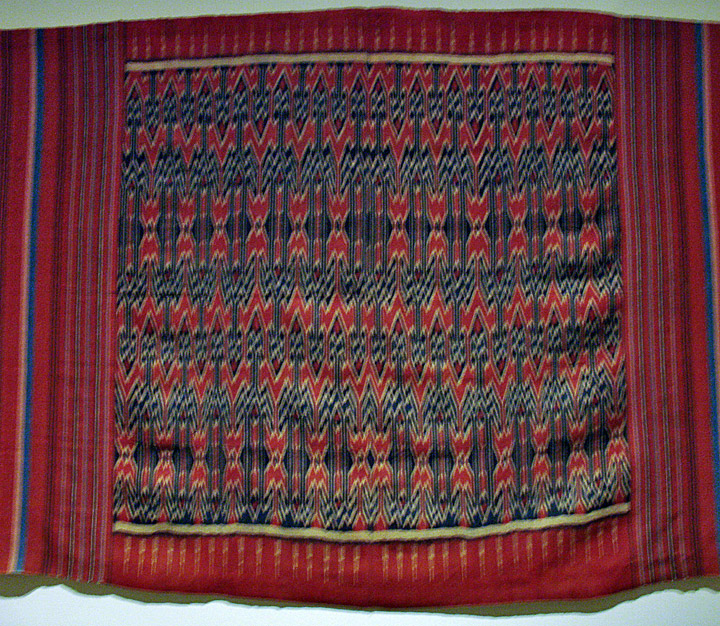
Ikat textile
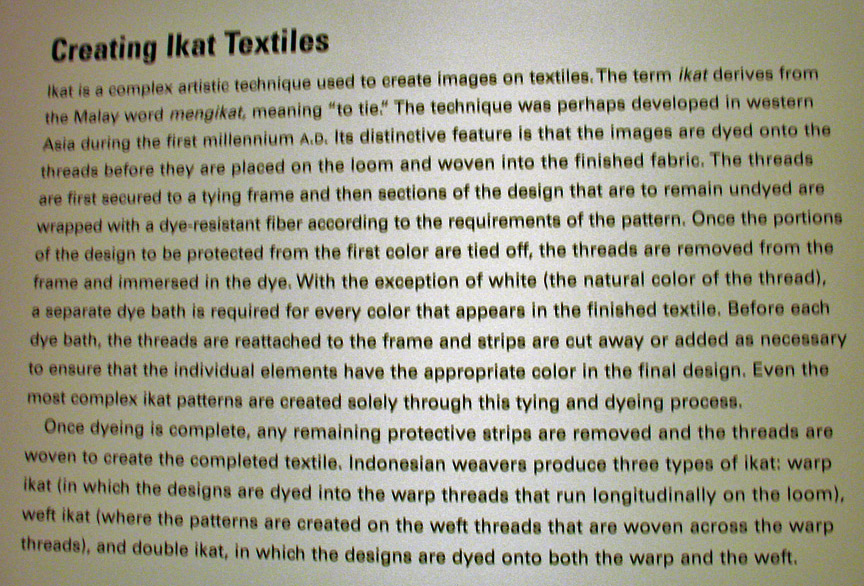
text on a card at the Museum
Creating Ikat Textiles
Ikat is a complex artistic technique used to create images on textiles. The term Ikat derives from the Malay work mengikat, meaning "to tie". The technique was perhaps developed in Western Asia during the first millennium A.D. Its distinctive feature is that the images are dyed onto the threads before they are placed on the loom and woven into the finished fabric, The threads are first secured to the dying frame and then sections of the design that are to remain undyed are wrapped with a dye-resistant fiber according to the requirements of the pattern. Once the portion of the design to be protected from the first color are tied off, the threads are removed from the frame and immersed in the dye. With the exception of white (the natural color of the thread), a separate dye bath is required for each color that appears in the finished textile, Before each bye bath, the threads are reattached to the frame and strips are cut away or added as necessary to ensure that the individual elements have the appropriate color in the final design. Even the most complex Ikat patterns are created solely through the tying and dyeing process.
Once dying is complete, any remaining protective strips are removed and the threads are woven to create the completed textile. Indonesian weavers produce three types of Ikat:
warp Ikat in which the designs are dyed into the warp threads that run longitudinally on the loom.
weft Ikat where the patterns are created on the weft threads that are woven across the warp threads.
double Ikat in which the designs are dyed onto both the warp and weft.
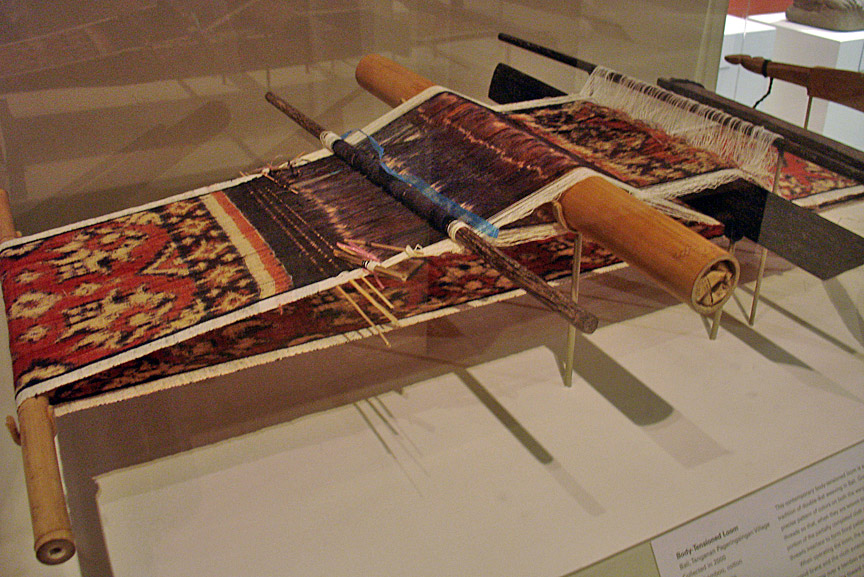
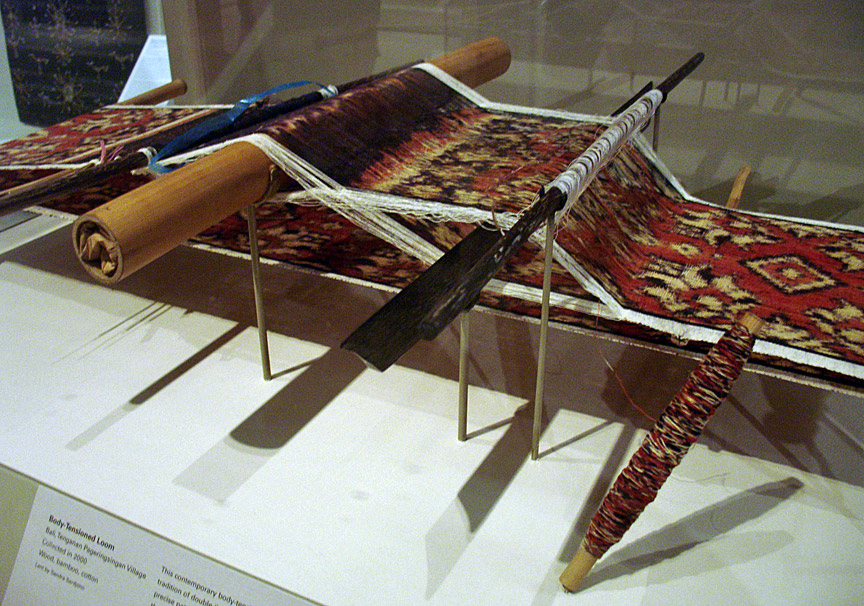
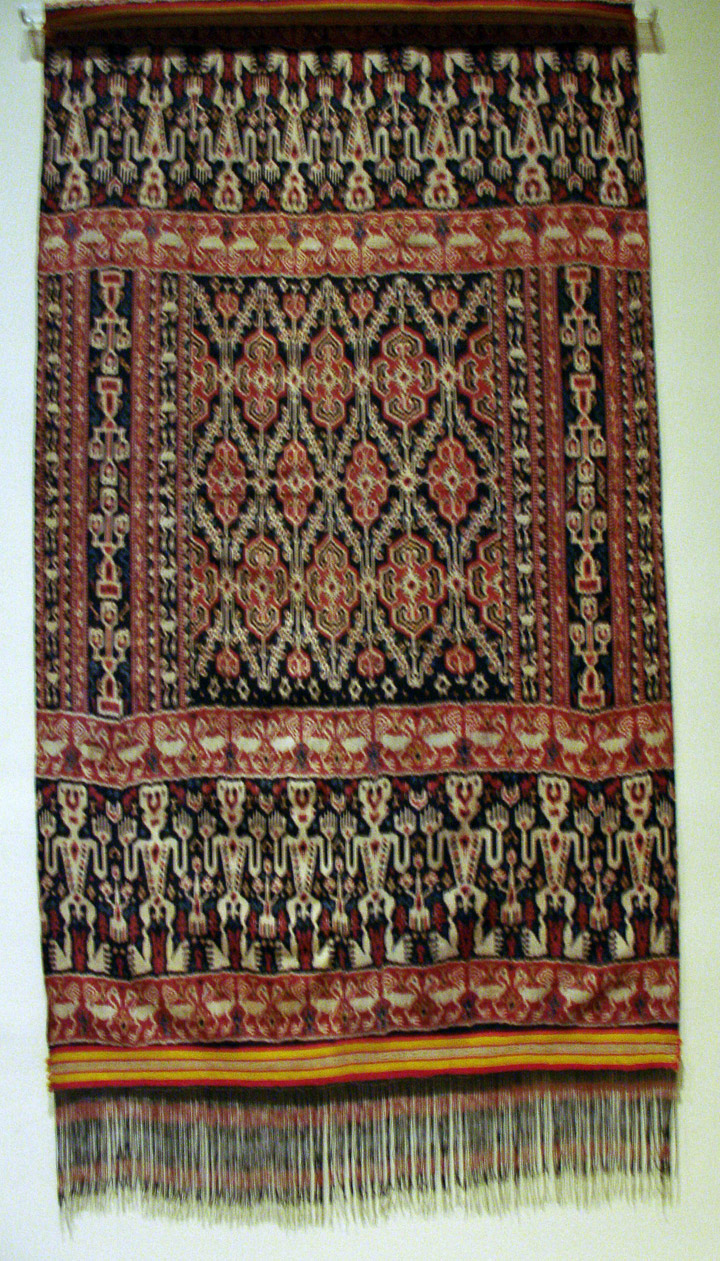
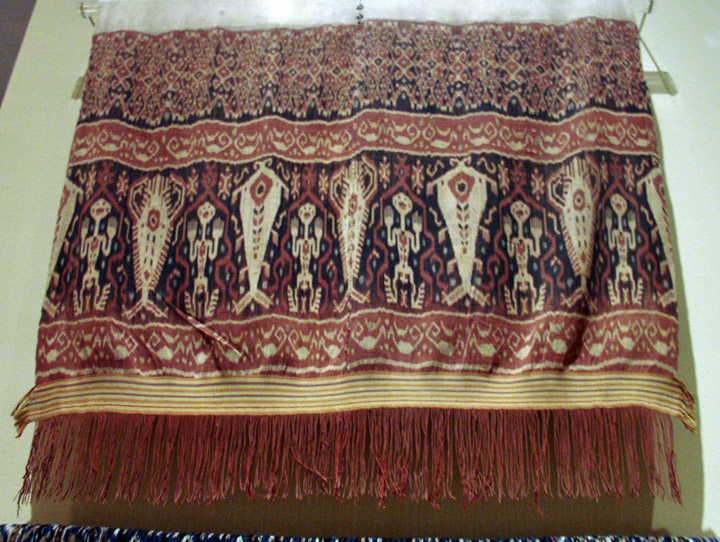
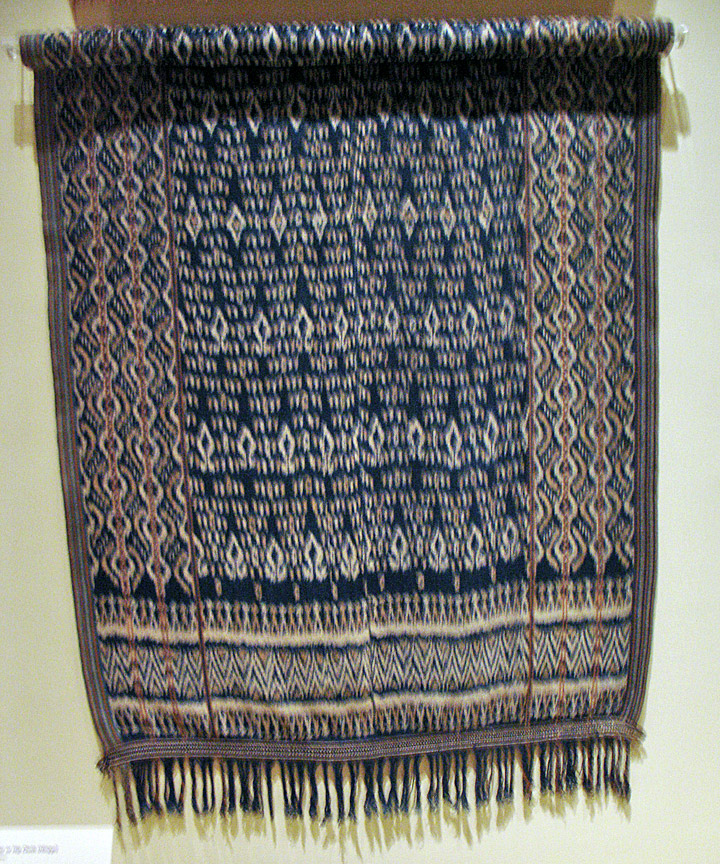
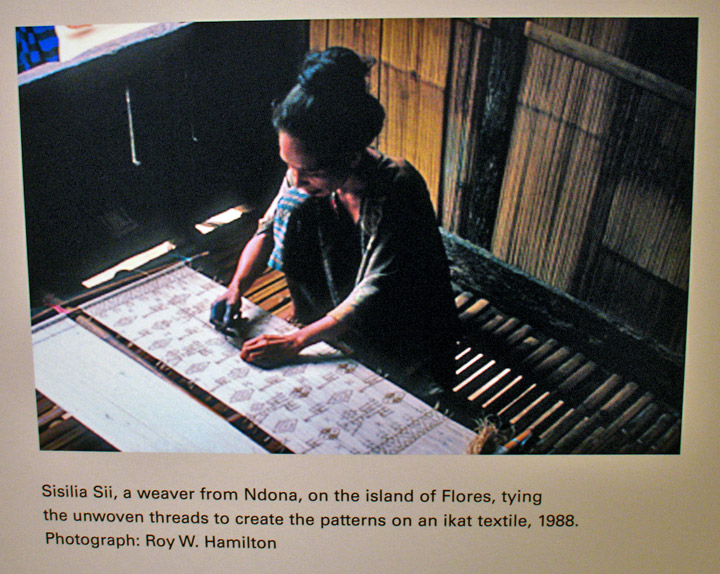

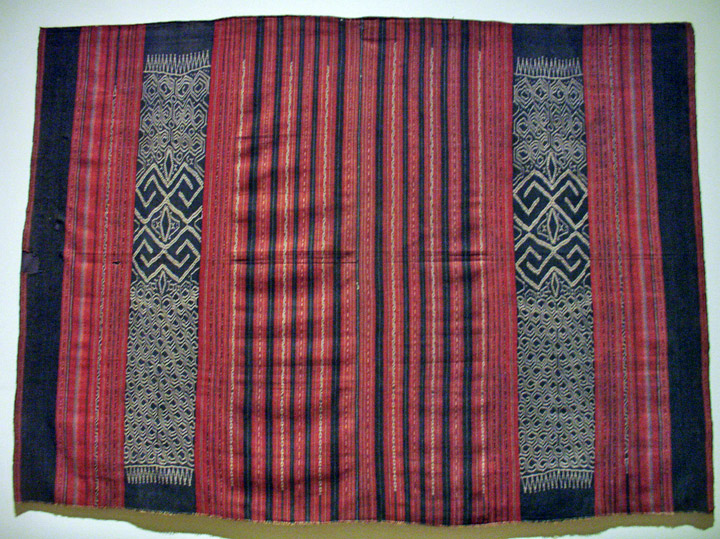
Return to Metropolitan Museum of Art pagege
Ikat at the American Museum of Natural History
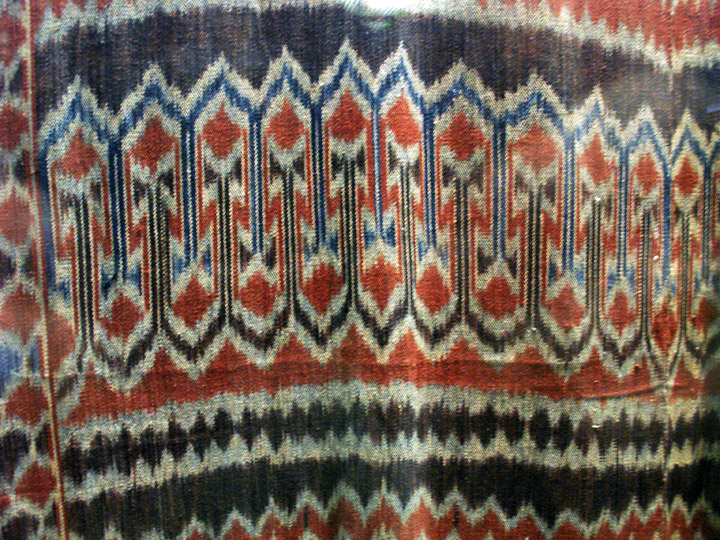
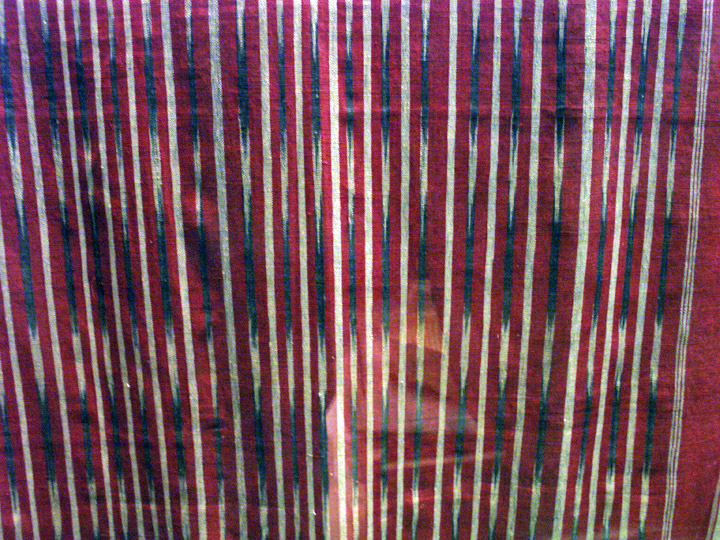
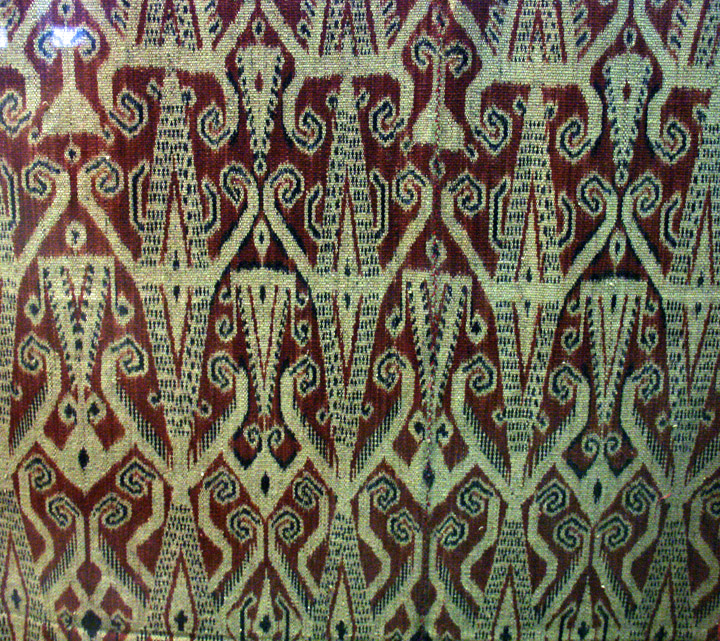
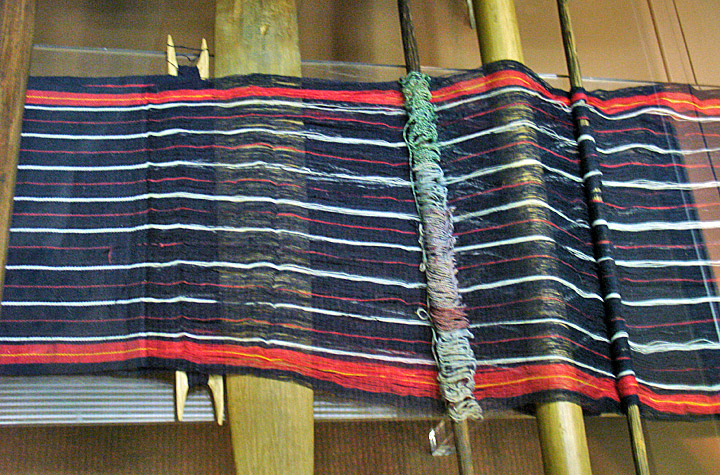
loom
Photos of the American Museum of Natural History